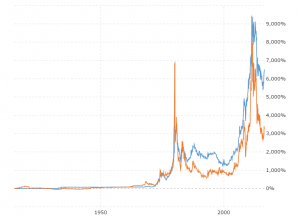How are Coins Made?
Someone new to coin collecting often begins just by being fascinated by the designs of coins, but sooner or later they become interested in how mints create these everyday items, that we handle with little regard for their origins, or for the skills and machinery that goes into producing them. In the past coins were hand-made, one by one, but for many years now they have been produced by machines, at the rate of about 120 every minute. So just how are coins produced?
The process begins with a design, and once that has been approved for production, a sculptor creates a model in plaster of the design, usually about 8 inches across. That model is then coated in rubber to create a mold, which is then used to cast a model in epoxy resin. That model is placed in a machine called a Javier reducing lathe, which over several days produces a miniature version of the casting, by reducing each feature in proportion onto a steel model called a hub. This is relatively soft metal, but it is then heated to harden it to extend its life. If this was used to make coins it would soon wear out, so instead it is pressed into softer steel to make a series of master dies. The hub looks like the final coin – the die looks like its negative image, and when pressed against metal will re-create the positive image again.
These few master dies are then used to create many working hubs, which in turn create the working dies that will be used to make the final coins. All this is necessary to allow one original to create millions of finished coins. Once a supply of working dies for both faces of the coin are made, the actual production process can begin.
Now that the dies are ready, there must be coins for them to stamp. These blank coins are produced on a blanking press. The metal itself arrives at the mint in rolls of flat sheets, 13 inches wide and 1,500 feet long. These are fed into the press, which stamps out rounds, leaving behind a web that is then recycled. After checking for defects and smoothing the edges, the blanks, as they are called at this stage, are cleaned in acid and passed through an upsetting mill, which raises an edge on them and turns them into planchets, ready for stamping.
An operator places a pair of working dies into the press, carefully aligning them to create a perfect coin. Using pressures of 100 to 150 tonnes, the planchets are simultaneously stamped on both sides by the dies, creating a coin. If there is a rim design, called reeds, around the edge, this is added either by using a die called a collar, or by using an edge incusing machine, which takes the coin and presses the edge into the rotating coin.
Because of the intense pressure, the dies soon begin to crack and fail, and the operator must watch for this and change the dies before defects occur. Additionally, the coins are inspected after stamping, to make sure they are uniform and correctly stamped. Despite this, errors occur, and these errors – often very small and difficult to detect – are eagerly sought after by collectors, and they result in coins that can have great value. In a future blog we will look at some of the more common kinds of striking errors that can occur.








